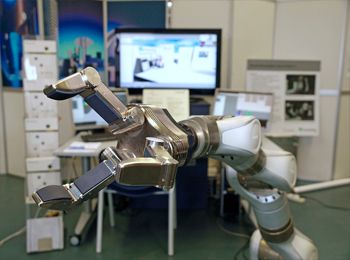SCHUNK had hosted Expert Days on Service Robots recently; this event was attended by 116 experts from 22 different countries. Topics that were discussed at the event revolved around the development and market performance of service robots in industrial applications.
 Robotics at SCHUNK Expert days
Robotics at SCHUNK Expert days
Out of the 18 speakers at the event, 9 were from the industry. They reiterated about the increasing popularity of service robotics in an economical perspective. Some of the speakers were from Polysius, a cement manufacturing company, which had a completely automatic automation system for cement quality inspection; Audi rigorously researches robots for picking up automotive parts. Some other applications of service robotics that were discussed were bomb disposal and air quality control in cleanrooms.
Professor Dr.Henrik I. Christensen, from the Georgia Institute of Technology, was of the opinion that some of the robotic solutions were mature but couldn’t be implemented as they were too expensive. Therefore, he suggested that research in the field of service robotics should focus on commercial viability as well. He added that robotic designs should be such that, they cater to special applications. The event served to drive home the point that the best way to create economical and advanced solutions was to make use of standardized platforms and components. Be it lightweight arms or flexibly applicable grippers, each one of them should meet ISO or national standards.
Some visionary approaches were also discussed at the event. Dr. Amos Albert from Robert Bosch was of the opinion that semi-autonomous robotic systems showed good growth potential. Semi-autonomous systems were assisted by a central support set up, from which the robot asks for help in solving a problem. Dr. Markus Waibel, from the Technical University in Zurich, extended the idea to a central knowledge repository, which was a storehouse of data, applications and models, which can be used by a robot as and when required.